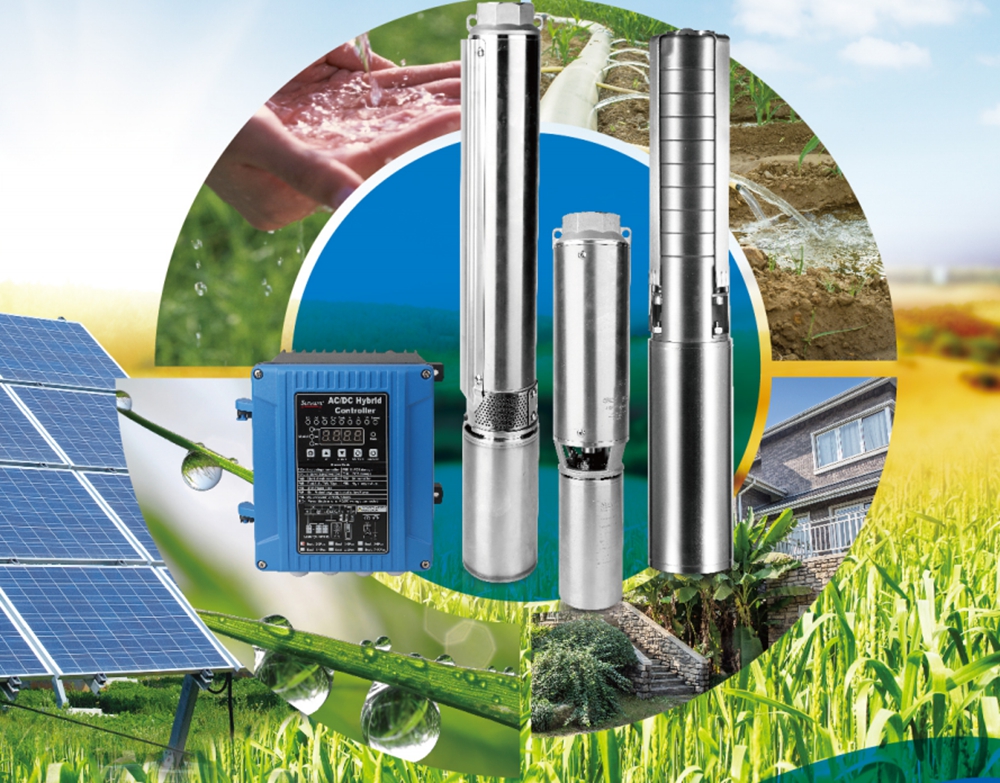+86 13816508465
Pump Solutions
Dec. 19, 2024

Pumping water without relying on a traditional electric power supply is a necessity in many situations, from remote areas without grid access to emergency scenarios and eco-friendly setups. Fortunately, there are several innovative and practical solutions for pumping water without electricity. Below, we explore the most effective options available.
1. AC Water Pump with an Electric Generator

Using an AC water pump powered by an electric generator is a reliable method when electricity is unavailable. Generators can be fueled by diesel or gasoline and provide the required power to run standard AC pumps.
This option is especially useful for:
Emergency backup in areas with frequent power outages.
Agricultural irrigation in remote regions.
Temporary water supply solutions at construction sites.
Pros:
High power output for large-scale pumping.
Works with existing AC pump systems.
Cons:
Dependence on fuel availability and not sustainable.
Noise and emissions from the generator.
2. AC Pump with an Inverter and Solar Panels

For a sustainable and eco-friendly approach, combining an AC pump with solar panels and an inverter is a popular choice. Solar panels generate direct current (DC), which is converted to alternating current (AC) using an inverter to power the pump.
This setup is ideal for:
Homes and farms looking to reduce their carbon footprint.
Off-grid applications with ample sunlight.
Pros:
Renewable and environmentally friendly.
Suitable for existing AC pumps.
Cons:
High initial investment.
Limited efficiency during cloudy or rainy days.
3. DC Pump with a Battery

A DC pump can be directly powered by batteries, which store energy from various sources, including solar panels or generators. The battery can be charged during the day and used to power the pump when needed.
This system is ideal for:
Nighttime or low-sunlight scenarios.
Portable or mobile water pumping setups.
Pros:
Reliable during non-sunny conditions.
Portable and versatile.
Cons:
Requires regular battery maintenance and eventual replacement.
Limited runtime based on battery capacity.
Usually applied on smaller power with limited performance.
4. DC Pump with Solar Panels

A fully solar-powered DC pump system is an efficient and sustainable solution for pumping water directly from a renewable energy source. This option eliminates the need for an inverter, making it a highly efficient choice for remote or off-grid locations.
Applications include:
Livestock Watering Systems: Solar pumps can provide a reliable water source for livestock, ensuring they have access to fresh water throughout the day.
Farmland Irrigation: Farmers can use solar pumps to irrigate crops, reducing dependence on traditional power sources and lowering operational costs.
Rural Water Supply: In rural areas, solar pumps can supply water for household use, improving access to clean water without relying on electricity.

Pros:
Energy-Efficient and Environmentally Friendly: Solar pumps harness the sun's energy, reducing carbon emissions and promoting sustainability.
Simplified Setup: Without the need for an inverter, installation is straightforward, making it easier for users to set up and maintain.
Low Operating Costs: Once installed, solar pumps have minimal operating costs since they rely on free solar energy.

Cons:
Dependence on Sunlight: The efficiency of solar pumps is contingent on adequate sunlight. In regions with prolonged cloudy or rainy periods, performance may be affected.
Lower Flow Rates: Compared to AC pumps, solar-powered DC pumps may have lower flow rates, making them more suitable for smaller-scale applications.
FAQ
Q1: How much sunlight do I need for a solar water pump to work effectively?
A1: Solar water pumps work best in areas that receive ample sunlight throughout the day. Ideally, a minimum of 4-6 hours of direct sunlight is needed for optimal performance. If you live in a region with frequent cloud cover, consider a pump with a larger solar panel array or a backup power source.
Q2: What kind of maintenance do solar water pumps require?
A2: Solar water pumps generally require minimal maintenance. Regularly check the solar panels for dirt or debris, as this can affect efficiency. Additionally, inspect the pump and piping for any leaks or blockages.
Q3: Can solar water pumps be used for large-scale irrigation?
A3: Yes, solar water pumps can be used for large-scale irrigation, but the size and capacity of the pump and solar panel system must be appropriately matched to the irrigation needs. Consulting with a specialist can help determine the best setup for your specific requirements.
Q4: Are solar water pumps suitable for drinking water?
A4: Yes, solar water pumps can be used to supply drinking water, provided that the water source is clean and the pump system is properly maintained. It's essential to ensure that the water is filtered and treated according to local health regulations before consumption.
Q5: What are the costs associated with installing a solar water pump?
A5: The costs can vary widely depending on the size of the pump, the solar panel system, and installation requirements. While the initial investment may be higher than traditional pumps, the long-term savings on electricity and maintenance often make solar pumps a cost-effective solution.
Q6: Can I use a solar water pump in winter?
A6: Solar water pumps can operate in winter, but their efficiency may decrease due to shorter daylight hours and potential snow cover on the panels. It's important to ensure that the pump is protected from freezing temperatures to avoid damage.
Conclusion
Whether you're looking for a backup solution during power outages, powering water pumps in remote locations, or adopting greener technologies, there are multiple ways to pump water without electricity. Each method has its advantages and is suited to specific scenarios. By understanding your requirements, budget, and environmental conditions, you can choose the most effective solution for your water pumping needs.
At Streampumps, we're dedicated to helping you find the right pump for any situation.
Contact us to learn more about our range of energy-efficient and innovative pumping solutions.
Address
No.17 XeDa Jimei Ind. Park, Xiqing Economic Development Area, Tianjin, China
Telephone
+86 13816508465
QUICK LINKS